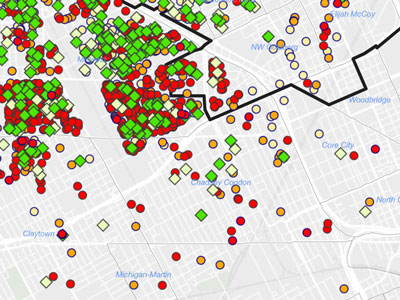1. Securing Permits
Any owner or owner's authorized agent who intends to construct, enlarge, alter, repair, move, demolish or change the occupancy of a building or structure, or to erect, install, enlarge, alter, repair, remove, convert or replace any electrical, gas, mechanical or plumbing system, the installation of which is regulated by this code, or to cause any such work to be performed, shall first make application to the building official and obtain the required permit.
2. Application for Permit
To obtain a permit, the applicant shall first file an application therefor in writing on a form furnished by the department of building safety for that purpose. Application or notice to the building official is not required for ordinary repairs to structures, replacement of lamps or the connection of approved portable electrical equipment to approved permanently installed receptacles. Such repairs shall not include the cutting away of any wall, partition or portion thereof, the removal or cutting of any structural beam or load-bearing support, or the removal or change of any required means of egress, or rearrangement of parts of a structure affecting the egress requirements; nor shall ordinary repairs include addition to, alteration of, replacement or relocation of any water supply, sewer, drainage, drain leader, gas, soil, waste, vent or similar piping, electric wiring or mechanical or other work affecting public health or general safety.
3. Submittal Documents
Construction documents, special inspection and structural program and other data shall be submitted in 1 or more sets with each application for a permit. The construction documents shall be prepared by or under the direct supervision of a registered design professional when required by 1980 PA 299, MCL 339.101 to 339.2919, and known as the Michigan occupational code. Where special conditions exist, the building official may require additional construction documents to be prepared by a registered design professional.
4. Permit Issued
If the building official is satisfied that the proposed work conforms to the requirements of this code and laws and ordinances applicable thereto, the building official shall issue a permit therefor as soon as practicable. The building permit or copy shall be kept on the site of the work until the completion of the project. Contractors or owners can now start performing work on the building.
5. Performing Work
Contractor or owner should coordinate trades to renovate commercial buildings according to the approved plans submitted to the municipality. If changes are made from the original approved plans, new revised plans shall be submitted to the municipality for review and approval. All trades should have secured their individual permits once the building permit is secured.
6. Inspections
It shall be the duty of the permit holder or their agent to notify the building official that such work is ready for inspection. It shall be the duty of the person requesting any inspections required by this code to provide access to and means for inspection of such work. Work shall not be done beyond the point indicated in each successive inspection without first obtaining the approval of the building official. The building official upon notification shall make the requested inspections and shall either indicate the portion of the construction that is satisfactory as completed or shall notify the permit holder or agent of the permit holder wherein portion of the construction fails to comply with this code. The notification shall include specific reference to the code chapter and section numbers in violation in writing. Any portions that do not comply shall be corrected and such portion shall not be covered or concealed until authorized by the building official.
All MEP installations (mechanical, electrical, and plumbing) shall be in accordance with their applicable codes and all required MEP inspections must be approved before required building inspections are conducted. The building inspections are always the last inspection to be approved and the only inspections that can authorize cover on framing members, foundation, and slab pours, backfill approvals, and final inspections.
7. Types of Inspections
Each trade has many different types of inspections, here are a list of the most common inspection types per trade:
-
Buildings: footings and foundations, slab, damp proofing, insulation, rough frame, above ceiling, fireproofing, final.
-
Electrical: rough wall temporary wiring, status, final.
-
Pluming: underground, rough wall, re-inspection, final.
-
Mechanical: rough duct, final
8. Certificate of Occupancy or Certificate of Acceptance
After the building official inspects the building or structure and finds no violations of the provisions of this code or other laws that are enforced by the department of building safety, the building official shall issue a certificate of occupancy which shall contain the following:
-
The building permit number.
-
The address of the structure.
-
A description of that portion of the structure for which the certificate is issued.
-
A statement that the described portion of the structure has been inspected for compliance with the requirements of this code.
-
The name of the building official.
-
The edition of the code under which the permit was issued.
-
Any special stipulations and conditions of the building permit.
-
If the construction is not a change of use/occupancy or an addition to the building a certificate of acceptance will be issued from all trade permits upon final approval.

